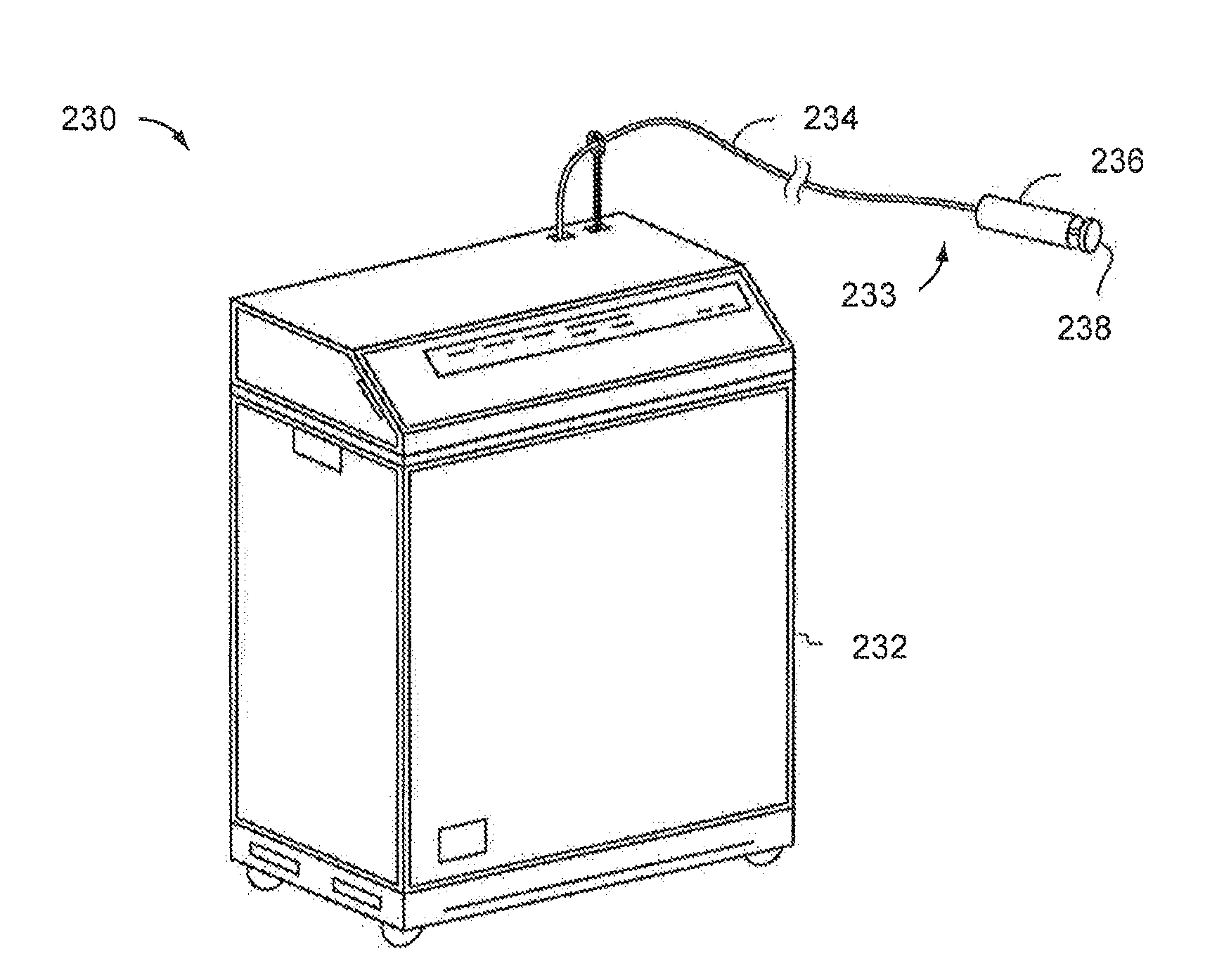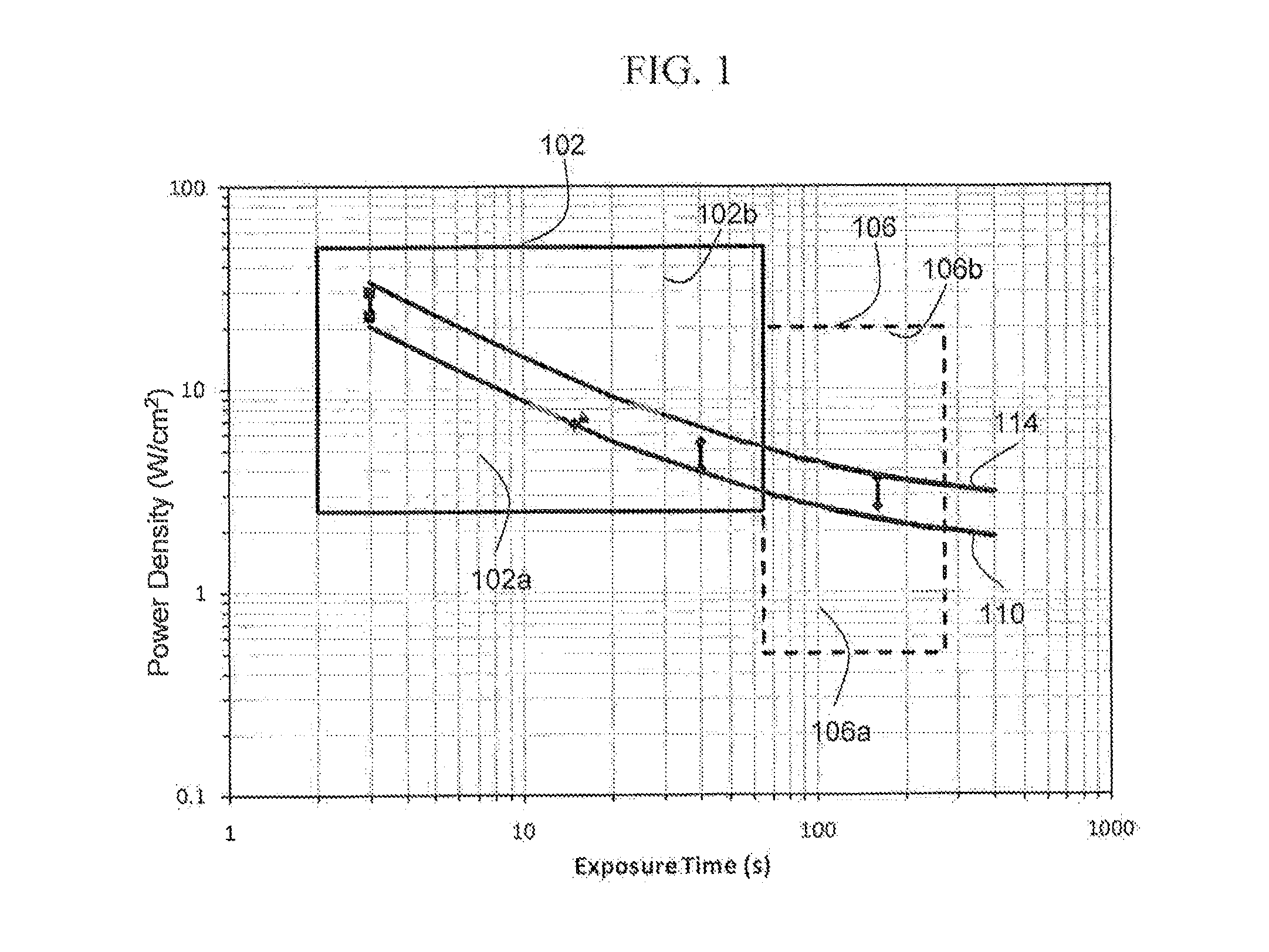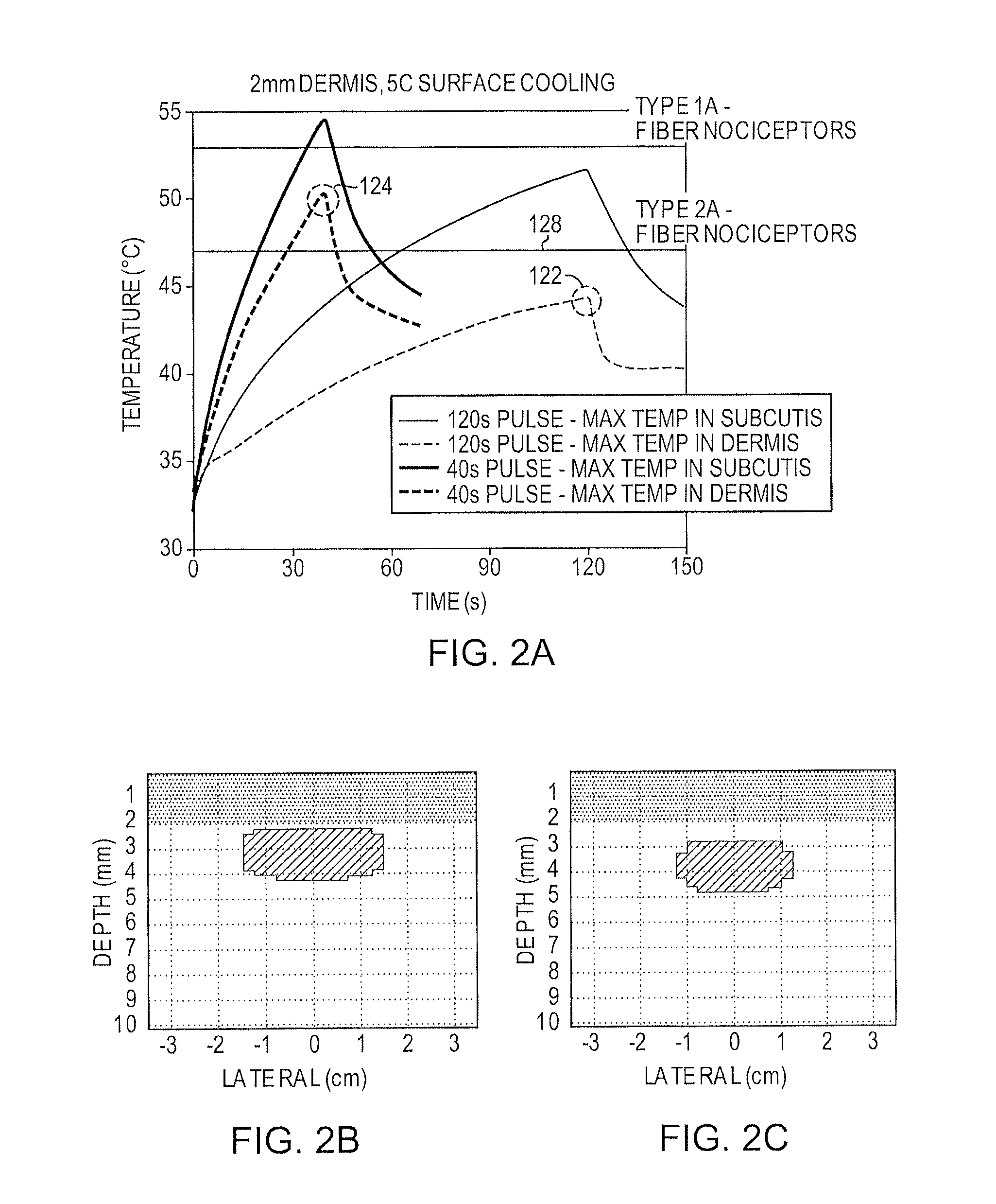Reduction Of Pain Through Lower Fluence Rates And Longer Treatment
a technology of laser radiation and fluence rate, applied in the field of laser radiation delivery process and system, can solve the problems of adverse effects, ineffective subcutaneous fat, and too painful parameters, and achieve the effect of reducing the number of fat cells in the tissue, safer and more effectiv
- Summary
- Abstract
- Description
- Claims
- Application Information
AI Technical Summary
Benefits of technology
Problems solved by technology
Method used
Image
Examples
Embodiment Construction
[0042]To reduce to the number of fat cells in biological tissue, radiation can be used to treat the tissue by selectively heating the subcutaneous fat region to induce fat necrosis without damaging the dermis and epidermis. Such treatment damages the fat cells so that lipid contained within can escape and at least a portion of the lipid can be carried away from a treatment region.
[0043]Based on the Arrhenius integral for predicting thermal damage, the onset and amount of damage are dependent both on tissue temperature and the time spent at that temperature. In particular, fat necrosis can be caused at lower power densities if exposure times are longer. Irradiation at lower power densities is advantageous because lower power densities generate lower temperatures, particularly in the dermis, which are more pain tolerant to a subject. Therefore, during treatment, a lower power density of radiation can be used, thereby decreasing the temperature rise in tissue to a level that is tolerab...
PUM
 Login to View More
Login to View More Abstract
Description
Claims
Application Information
 Login to View More
Login to View More - R&D
- Intellectual Property
- Life Sciences
- Materials
- Tech Scout
- Unparalleled Data Quality
- Higher Quality Content
- 60% Fewer Hallucinations
Browse by: Latest US Patents, China's latest patents, Technical Efficacy Thesaurus, Application Domain, Technology Topic, Popular Technical Reports.
© 2025 PatSnap. All rights reserved.Legal|Privacy policy|Modern Slavery Act Transparency Statement|Sitemap|About US| Contact US: help@patsnap.com



